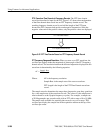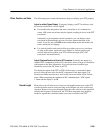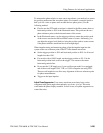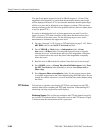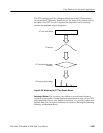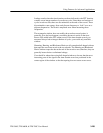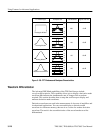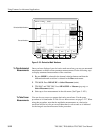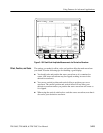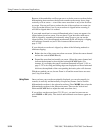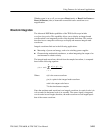
Using Features for Advanced Applications
3–208
TDS 500C, TDS 600B, & TDS 700C User Manual
In step 8 (page 3–195) in To Create an FFT, the four windows are listed in order
according to their ability to resolve frequencies versus their ability to accurately
measure the amplitude of those frequencies. The list indicates that the ability of a
given window to resolve a frequency is inversely proportional to its ability to
accurately measure the amplitude of that frequency. In general, then, choose a
window that can just resolve between the frequencies you want to measure. That
way, you will have the best amplitude accuracy and leakage elimination while
still separating the frequencies.
You can often determine the best window empirically by first using the window
with the most frequency resolution (rectangular), then proceeding toward that
window with the least (Blackman-Harris) until the frequencies merge. Use the
window just before the window that lets the frequencies merge for best compro-
mise between resolution and amplitude accuracy.
NOTE. If the Hanning window merges the frequencies, try the Hamming window
before settling on the rectangular window. Depending on the distance of the
frequencies you are trying to measure from the fundamental, the Hamming
window sometimes resolves frequencies better than the Hanning.
Window Characteristics. When evaluating a window for use, you may want to
examine how it modifies the FFT time domain data. Figure 3–100 shows each
window, its bandpass characteristic, bandwidth, and highest side lobe. Consider
the following characteristics:
H The narrower the central lobe for a given window, the better it can resolve a
frequency.
H The lower the lobes on the side of each central lobe are, the better the
amplitude accuracy of the frequency measured in the FFT using that
window.
H Narrow lobes increase frequency resolution because they are more selective.
Lower side lobe amplitudes increase accuracy because they reduce leakage.



